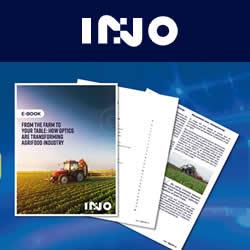US Farmers Combat Soil Compaction, Boost Yields Up to 34% with New Biosurfactant
Trials confirm Unpac® sophorolipid technology increases crops yields and alleviates soil compaction impacting 68 million acres of farmland
SOLON, Ohio (October 10, 2024) - US farmers are using a new solution to treat soil compaction - a problem that affects over 68 million acres of farmland and significantly reduces crop yields. Unpac®, developed by Locus Agriculture (Locus AG), is an innovative biosurfactant soil amendment that successfully breaks up soil compaction through fermentation-derived technology. Three years of independent field trials have confirmed significant yield boosts of up to 34% in a multitude of crops, with an 86% win rate.
"Given the lack of effective, long-term solutions for soil compaction, Unpac is a timely and necessary advancement for farmers that's easy to implement with proven results," said David Dyson, lead agronomist of Locus AG. "This 100% biodegradable product integrates seamlessly with existing irrigation systems, doesn't build up in the soil and is proven to increase production across a wide range of crops and soil types."
Soil Compaction is a Barrier to US Crop Production
Soil compaction is a major barrier to crop productivity, particularly in areas with heavy machinery use and frequent droughts. Researchers estimate soil compaction can reduce crop yields by 30 to 60 percent, making it a critical issue for farm profitability.
Compacted soils restrict root growth, limiting water and nutrient uptake, which stunts crop development and lowers yields. These soils are also more prone to erosion and runoff, further depleting scarce water resources. In drought-prone regions, poor soil structure further limits water retention, making it even harder for crops to survive and thrive.
Traditional approaches to soil compaction like tilling are often labor-intensive, costly and unsustainable, providing only temporary relief. Unpac offers a simplistic and effective way to improve soil structure and boost nutrient uptake, providing farmers with a sustainable solution to compaction.
Novel Sophorolipids Proven to Treat Soil Compaction and Boost Yields
Unpac features proprietary sophorolipid biosurfactants produced through a novel fermentation process. The biosurfactants penetrate compacted soils, improving water movement and allowing plant roots to grow deeper for better nutrient uptake. This leads to enhanced soil fertility, better water retention and ultimately higher yields—all while promoting more sustainable farming practices.
"Studies show Unpac lowers the surface tension of water, allowing it to reach deep into soil micropores to improve water holding capacity and break up compaction," Dyson said. "Because of this, we've seen the most significant yield boosts in permanent crops like orchards and vineyards, where compaction is more prevalent from no tillage."
Independent, multi-year trials conducted by leading contract research organizations (CROs) consistently demonstrate Unpac's ability to increase yields across diverse crops and regions, with an 86% win rate. The three most significant yield gains were seen in table grapes (15-24%), almonds (34%) and apples (33%).
Unpac is made in the USA and available for immediate shipment. Farmers are already using it successfully on specialty crops nationwide, with expansion into additional crops underway. For more information, visit LocusAG.com.
Featured Product

